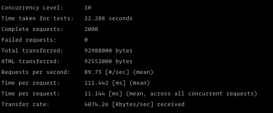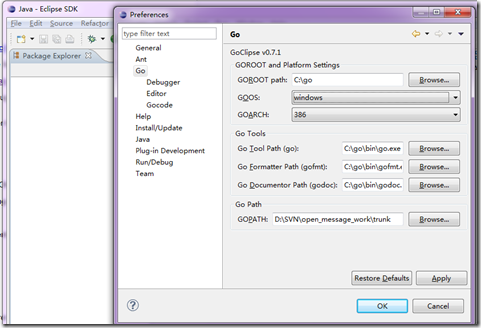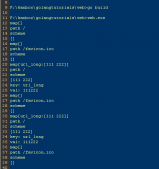# 建立与打开文件
// 新建文件可以通过如下两个方法:
func Create(name string) (file *File, err Error)
根据提供的文件名创建新的文件,返回一个文件对象,默认权限是0666的文件,返回的文件对象是可读写的。
func NewFile(fd uintptr, name string) *File
根据文件描述符创建相应的文件,返回一个文件对象
// 通过如下两个方法来打开文件:
func Open(name string) (file *File, err Error)
该方法打开一个名称为name的文件,但是是只读方式,内部实现其实调用了OpenFile。
func OpenFile(name string, flag int, perm uint32) (file *File, err Error)
打开名称为name的文件,flag是打开的方式,只读、读写等,perm是权限
// 写文件
func (file *File) Write(b []byte) (n int, err Error)
写入byte类型的信息到文件
func (file *File) WriteAt(b []byte, off int64) (n int, err Error)
在指定位置开始写入byte类型的信息
func (file *File) WriteString(s string) (ret int, err Error)
写入string信息到文件
// 读文件
func (file *File) Read(b []byte) (n int, err Error)
读取数据到b中
func (file *File) ReadAt(b []byte, off int64) (n int, err Error)
从off开始读取数据到b中
// 删除文件
func Remove(name string) Error
调用该函数就可以删除文件名为name的文件
////关闭文件
func (file *File)Close()
写文件
|
1
2
3
4
5
6
7
8
9
10
11
12
13
14
15
16
17
18
19
20
21
22
23
24
25
26
|
// code_034_os_write_to_file project main.gopackage mainimport ( "fmt" "os")func main() { //新建文件 fout, err := os.Create("./createfile.txt") if err != nil { fmt.Println(err) return } defer fout.Close() for i := 0; i < 5; i++ { //备注:windows环境下,结尾\r\n才能换行,linux下\n就可以 outstr := fmt.Sprintf("%s:%d\r\n", "Hello Go", i) //Sprintf控制台输出,并有返回值string // 写入文件 fout.WriteString(outstr) //string信息 fout.Write([]byte("abcd\r\n")) //byte类型 }} |
读文件
|
1
2
3
4
5
6
7
8
9
10
11
12
13
14
15
16
17
18
19
20
21
22
23
24
25
|
// code_035_os_read_from_file project main.gopackage mainimport ( "fmt" "os")func main() { fin, err := os.Open("./open_and_read1.txt") if err != nil { fmt.Println(err) //若文件不存在:The system cannot find the file specified. } defer fin.Close() buf := make([]byte, 1024) //创建存储slice for { n, _ := fin.Read(buf) //读文件 if n == 0 { break } fmt.Println(string(buf)) }} |
拷贝文件----》(备注:已经创建并写入内容的local_copy_file.txt)终端切换到当前目录下,执行 go run main.go local_copy_file.txt dst_file.txt
|
1
2
3
4
5
6
7
8
9
10
11
12
13
14
15
16
17
18
19
20
21
22
23
24
25
26
27
28
29
30
31
32
33
34
35
36
37
38
39
40
41
42
43
44
45
46
47
48
49
50
51
52
53
54
55
56
57
58
|
// code_036_os_copy_file project main.gopackage mainimport ( "fmt" "io" "os")func main() { // 使用命令行提高拷贝的复用性 args := os.Args if args == nil || len(args) != 3 { fmt.Println("useage : go filename.go src File dstFile") return } srcPath := args[1] dstPath := args[2] fmt.Printf("srcPath = %s, dstPath = %s\r\n", srcPath, dstPath) if srcPath == dstPath { fmt.Println("源文件和目标文件不能重名") } //执行复制 srcFile, err1 := os.Open(srcPath) if err1 != nil { fmt.Println(err1) return } dstFile, err2 := os.Create(dstPath) if err2 != nil { fmt.Println(err2) return } read_buf := make([]byte, 1024) for { //读取文件 n, err := srcFile.Read(read_buf) //每次文件读取字节的长度 if err != nil && err != io.EOF { fmt.Println(err) break } if n == 0 { fmt.Println("文件处理完毕") break } //写入目的文件 write_buf := read_buf[:n] dstFile.Write(write_buf) } // 关闭文件 srcFile.Close() dstFile.Close()} |
原文链接:http://blog.51cto.com/13914991/2294182












